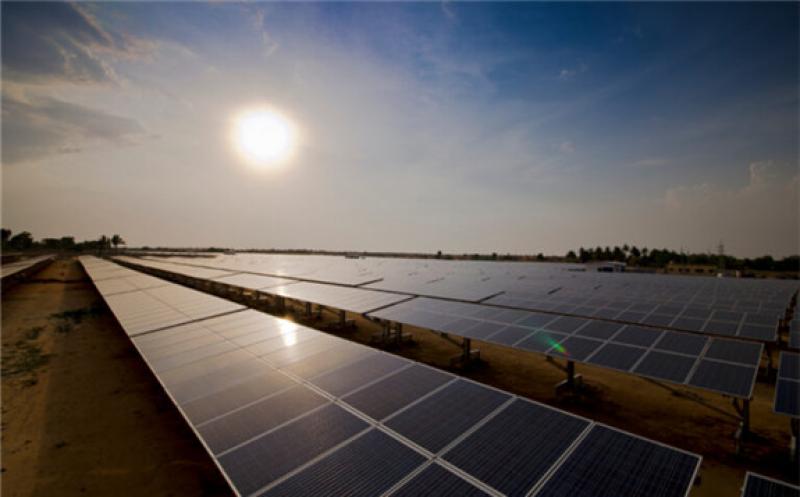An Indian government scheme to support domestic battery manufacturing received bids totalling 130GWh of proposals, more than double the anticipated 50GWh of capacity the incentives will support.

Batteries are being seen as a cornerstone of Prime Minister Narendra Modi’s ‘Make in India’ push to promote and support high-level manufacturing industries and also a policy to establish “self-reliant” manufacturing of key technologies like energy storage.
Batteries, along with solar PV, had been included in mid-2020 in a group of eight ‘Champion Sectors’ in which the government would be incentivising domestic manufacture through its Production Linked Incentive scheme.
Later that year, as it was revealed INR45 billion (US$603 million) of support would be earmarked for high-efficiency solar PV module development and INR181 billion (US$2.42 billion) for advanced battery cells, the government described advanced chemistry cell battery manufacturing as “one of the largest economic opportunities of the 21st century”.
The Ministry of Heavy Industries (MHI) issued a Request for Proposals (RfP) in October 2021 for the Advanced Chemistry Cell (ACC) Battery Storage Programme.
Support via the programme is expected to stimulate domestic manufacturing investment but also facilitate demand creation for battery storage in the stationary energy storage system (ESS) sector, as well as the electric vehicle (EV) sector. This is in addition to direct financial support for promoting electrified transportation.
The government also anticipates that doing so will reduce the national demand for imported crude oil and increase the share of renewable energy on the grid, the MHI said in a press release.
Manufacturing facilities, each with at least 5GWh annual production capacity that could be set up within two years were eligible, while the technology agnostic programme would distribute incentives over a period of five years for batteries manufactured within the country.
The RfP closed on the weekend with bids received from 10 domestic and foreign-headquartered companies which now await the ministry’s decision.
Bidders include Reliance New Energy Solar (RNES), a subsidiary of major Indian industrial conglomerate Reliance Industries. On 31 December 2021, it was announced that RNES had signed definitive agreements to acquire UK battery tech startup Faradion, which has an IP portfolio covering several aspects of sodium-ion cell technology. RNES has proposed using the sodium-ion tech at a gigafactory located at a ‘Green Energy Giga Complex’ in Jamnagar.
Another bidder, automotive parts and equipment manufacturer Lucas TVS, was reported by Energy-Storage.news last September to have signed an agreement with US company 24M to use the latter’s advanced ‘SemiSolid’ electrode tech at a battery cell factory in Chennai.
Both Lucas TVS and RNES said that they were aiming to see their products used in grid storage applications as well as electric transport and other sectors including heavy industrial equipment.
Bidders:
-Reliance New Energy Solar
-Hyundai Global Motors Company
-Ola Electric Mobility
-Lucas TVS
-Mahindra & Mahindra
-Amara Raja Batteries
-Exide Industries
-Rajesh Exports
-Larsen & Toubro
-India Power Corporation
‘A new beginning’
In a statement sent to Energy-Storage.news today, the India Energy Storage Alliance (IESA) described the oversubscribed scheme’s RfP response as marking “a new beginning” for the country’s energy storage market.
“This is great news and a major milestone for the Indian energy storage and e-mobility industry,” IESA founder and president Dr Rahul Walawalkar said.
Walawalkar said IESA — which is an alliance of companies and organisations accelerating the advancement of the energy storage, e-mobility and hydrogen sectors — was thankful to the MHI and to government policy think tank NITI Aayog, the latter having designed the Production Linked Incentive programme.
IESA explained that the scheme aims to promote the construction of 50GWh annual production capacity for advanced battery cells and a further 5GWh of so-called ‘niche’ advanced chemistry cells in India by 2027.
“In 2016, IESA set a vision to make India a global hub for advanced energy storage and emobility technologies by 2022. Last year, we have upgraded the vision to build on the ACC PLI with a roadmap for 50+ GWh ACC manufacturing capacity by 2027 and scaling it to 100+ GWh of capacity by 2030,” IESA’s founder and CEO said, thanking MHI and NITI Aayog for working with the group’s vision “over the past five years and taking it to the conclusion”.
Batteries will be vital to meeting India’s policy targets of electric cars making up 30% of all car sales and meeting 50% of the country’s energy requirements with renewable energy, both by 2030.
India’s grid-scale energy storage sector is only just getting started, but there have been strong indicators both from the government and from private industry that rapid uptake in the next few years is recognised as necessary. A study by the US National Renewable Energy Laboratory (NREL) found that India has the most opportunity, as well as need for, energy storage in the South Asia region.
In December, Tata Power representatives told this site that there is “promising potential” for the energy storage business in India, after its solar energy subsidiary was awarded the country’s largest solar-plus-storage project to date. State-owned power producer NTPC said in June 2021 that it wants to install 1GWh of energy storage across its portfolio of existing power plant sites.
Multiple gigawatt-hours of government-backed tenders for energy storage are in the process of being held or are expected to be forthcoming soon including a 1,000MWh pilot tender by the Solar Energy Corporation of India (SECI), while power minister RK Singh said a 4,000MWh tender can be expected soon.
The national Central Electricity Regulatory Commission last year also issued a draft set of market regulations for ancillary services, which would allow energy storage and demand response to participate for the first time.